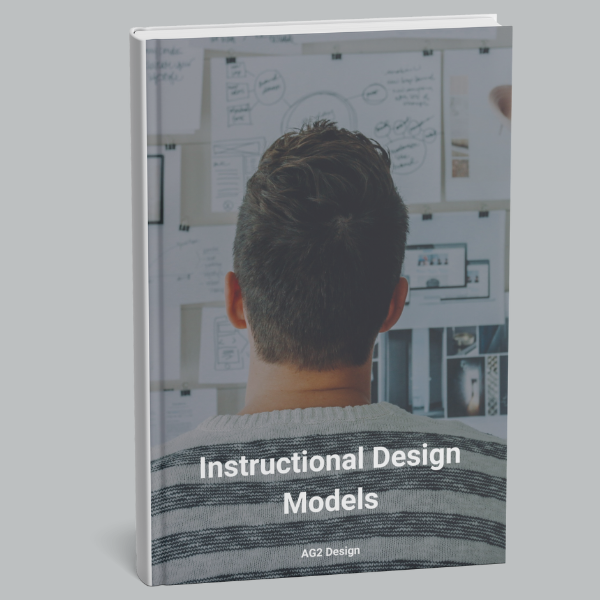A Guide to Instructional Design Models
Instructional design models provide essential frameworks for creating effective, engaging learning experiences that address diverse learner needs and overcome common challenges in education and training.
Instructional design models provide essential frameworks for creating effective, engaging learning experiences that address diverse learner needs and overcome common challenges in education and training.

Instructional design is a critical component in education, training, and eLearning. It helps create engaging, practical, and meaningful learning experiences that cater to learners' diverse needs. The field of instructional design has evolved over the years, with various instructional design models emerging to offer unique perspectives and strategies for creating impactful instruction.
This article will explore instructional design models, their applications, strengths, and weaknesses. Additionally, we are excited to announce the launch of our new eBook, "An Introduction to Instructional Design Models". Read on to discover how these models can revolutionise your approach to instructional design and how our eBook can serve as a valuable resource on your journey.
Instructional Design Models
Elevate your instructional design skills today with "An Introduction to Instructional Design Models." Whether you're looking to refine your current methods or explore new strategies, this eBook offers the comprehensive insights and practical guidance you need. Don't miss out on this essential resource—unlock the full potential of your educational and training programmes now. Grab your copy and start transforming your learning experiences!

Discover the guide for creating effective and engaging learning experiences with "An Introduction to Instructional Design Models." This eBook explores eight influential instructional design models, including ADDIE, Bloom's Taxonomy, and Gagne's Nine Events of Instruction, providing valuable insights for educators, trainers, and instructional designers. Whether you're a seasoned professional or new to the field, this resource offers practical guidance on applying these models to enhance your instructional design practice.
Instructional design models provide structured frameworks that guide instructional designers through creating practical learning experiences. These models help address common challenges instructional designers face, such as identifying clear learning objectives, meeting diverse learner needs, balancing content and application, engaging and motivating learners, and evaluating instructional effectiveness.
By understanding and applying instructional design models, designers can create more impactful, engaging, and inclusive instruction, ultimately empowering learners to succeed personally and professionally.
Let's take a closer look at some of the most prominent instructional design models:
Introducing Our New eBook: "An Introduction to Instructional Design Models"
We are thrilled to announce the launch of our new eBook, "An Introduction to Instructional Design Models." This comprehensive guide explores the instructional design models discussed in this blog post, along with their applications, strengths, and weaknesses.
"An Introduction to Instructional Design Models" is an invaluable resource for instructional designers at all stages of their careers. It offers insights and guidance on creating impactful learning experiences that empower learners to succeed in their personal and professional lives.
Don't miss out on this opportunity to elevate your instructional design skills and unlock the full potential of your instruction. Get your copy of "An Introduction to Instructional Design Models" today!
Instructional design models offer invaluable guidance for creating impactful learning experiences. By understanding and applying these models, instructional designers can address common challenges and develop instruction that meets the needs of their learners and achieves desired learning outcomes.
To expand your instructional design knowledge and skills, consider investing in our new eBook, "An Introduction to Instructional Design Models." This comprehensive guide will serve as a valuable resource on your journey towards mastering the art and science of instructional design.
Instructional design models like ADDIE (Analysis, Design, Development, Implementation, Evaluation), Bloom's Taxonomy (hierarchical cognitive levels from remembering to creating) and SAM (iterative prototyping for continuous improvement) provide structured frameworks to align learning objectives with learner needs, ensuring engaging, inclusive experiences that promote skill development and knowledge retention.
The ADDIE model follows a linear process with five phases—Analysis to identify needs, Design to plan objectives, Development to create materials, Implementation to deliver training and Evaluation to assess effectiveness—helping instructional designers build systematic, outcome-focused learning programmes that meet organisational goals.
Bloom's Taxonomy is a classification framework that organises learning objectives into six cognitive levels—remembering, understanding, applying, analysing, evaluating, and creating—to guide designers in crafting experiences that foster deeper critical thinking and varied skill levels beyond basic recall.
Gagne's Nine Events of Instruction outline steps such as gaining attention, informing objectives, stimulating prior knowledge, presenting content, providing guidance, eliciting performance, offering feedback, assessing outcomes, and enhancing transfer. These steps enable designers to create motivating, structured sequences that facilitate effective skill acquisition and retention.
Merrill's Principles of Instruction (MPI) emphasise task-centred learning, activation of prior knowledge, demonstration of skills, application through practice, and integration into real-world contexts. These principles help instructional designers develop meaningful, engaging programmes that drive practical performance improvements and learner motivation.



